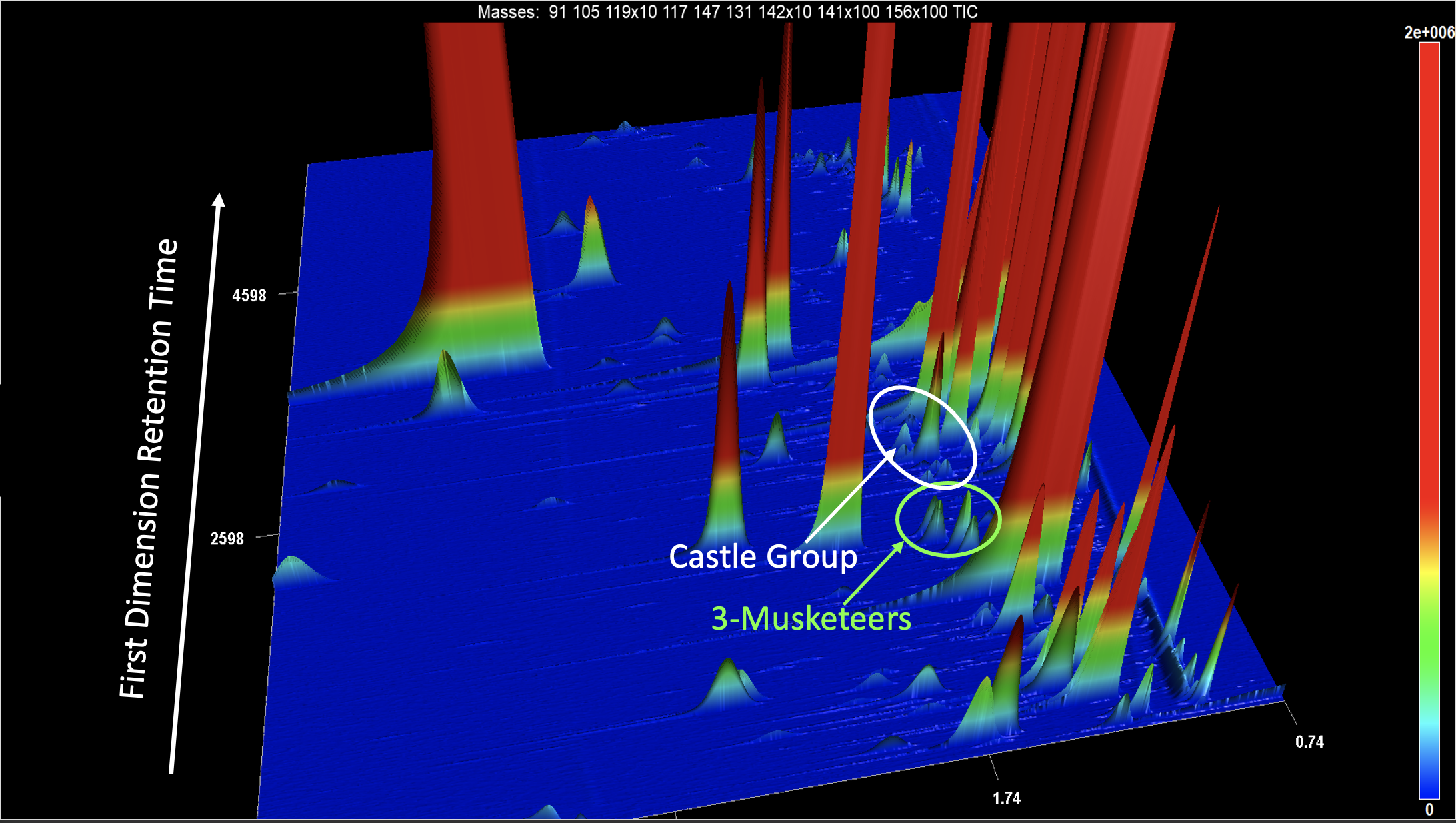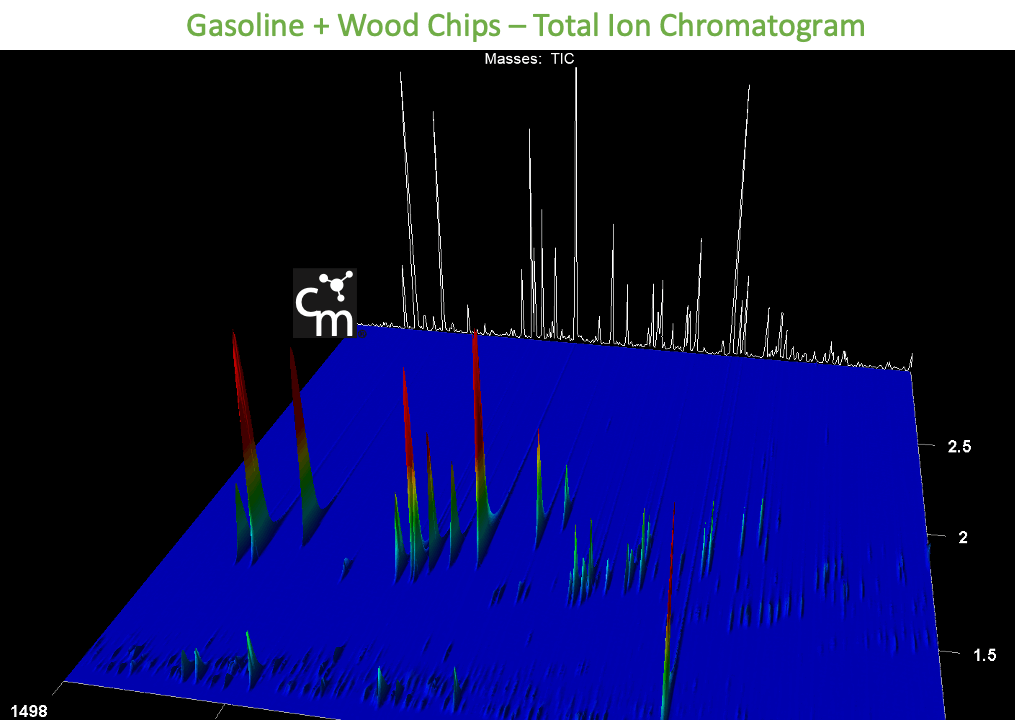We recently discussed the issue of matrix and how the other stuff in your fire debris sample can be problematic for the laboratory in identifying ignitable liquid residue in your evidence samples.
The first question may be, why is the matrix there in the first place? Why can’t the laboratory remove it? There are a lot of compounds that are classified as volatile organic compounds (VOCs). These compounds are present everywhere. In the air naturally – the natural forest smell. In the house and consumer products that we buy. ILRs are also composed of VOCs. When we burn things, more VOCs can be formed. This makes up quite a large mixture of VOCs in our fire debris samples.
Most laboratories use an activated carbon strip (ACS) method to extract and analyze ILRs in fire debris samples. This method is easy to do as it simply involves heating the sample up to get the VOCs off the fire debris you have collected and stuck to a carbon strip that is then extracted and analyzed. This method provides no cleanup of the samples. This means that anything that is in the sample – all the VOCs, regardless of origin end up on the carbon and injected into the instrument. This is still the best method of extraction but provides selectivity in what we inject onto the instrument. The instrument used for measurement is a gas chromatograph (GC) coupled with a mass spectrometer. This method uses the GC to separate the compounds and a mass spectrometer to measure and identify the compounds. Unfortunately, for many evidence samples, the technique cannot separate what is target compounds from matrix in the sample which can result in a false negative for your evidence.

GCxGC-TOFMS of gasoline showing all compounds present in a gasoline sample with no matrix.
There is an instrument that allows us to do more separation and provides more selectivity so we can see the compounds that are needed to identify ILR in a sample. It is the same technique as above but there is a 2nd dimension gas chromatograph to help separate the compounds. Here is a chromatogram (3 dimensions) of what gasoline looks like using this method. You can see very clean, large peaks. Even the small ripples or folds represent distinctive compounds that are present in a gasoline sample. These are our target compounds that we need to see, in order to identify gasoline in the sample. In fact, the 5 biggest peaks all close together (castle group) must be present in the sample to identify gasoline.

GCxGC-TOFMS of fire debris sample collected during a wildfire arson investigation showing the large amount of matrix present in these samples (big red pillars going off the top of picture) that can prevent routine analysis methods from identifying gasoline in the sample.
Matrix can be a very large part of fire debris evidence that is sent for ILR analysis. Matrix can be present in residential and commercial fires, vehicle fires and is very prominent wildfires and bushfires). The above chromatogram shows how very small the target compounds are compared to the big matrix peaks in the sample. These compounds are only visible because of the 2nd dimension GC that is used for the analysis of the sample.
If you think your samples have a lot of matrix or think you are getting false negatives for your fire debris samples, consider using this technique of analysis to see around the matrix and find the signals hiding in your evidence samples.




